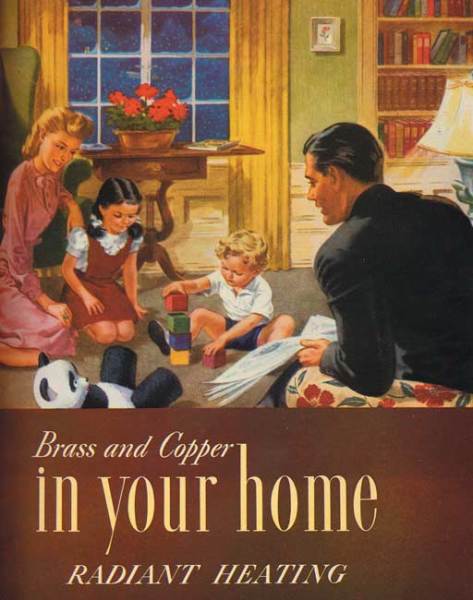
A copper company’s ad touts the cozy, inviting floors that radiant heat, carried by copper tubing, can provide on a snowy winter day.
Growing up in Hicksville, Long Island (don’t laugh!), I spent a good part of junior and senior high school sharing a classroom with Billy Joel, now the superstar ‘Piano Man.’ That town is not only the site of my single brush with musical fame but, oddly enough, also my connection to the place that introduced American consumers to a revolution in comfort: radiant heating systems.
I clearly remember sitting next to Billy Joel in biology class. We were about 14 years old at the time, and he was singing a brand new Herman’s Hermits song while tapping the tune on his desk with the eraser ends of two yellow pencils. He turned to me and proclaimed that he would some day be more famous than Herman was at the time. I smiled and nodded. Even though we were just a couple of suburban kids, anything seemed possible back then.
Billy Joel lived in Levittown, New York, which is right next to Hicksville. Sociologists have written books about Levittown, because the development birthed the first mass-produced homes in America, about 10,000 of them. The houses all looked alike, and everyone who lived there was the same age. There had never been anything like it.
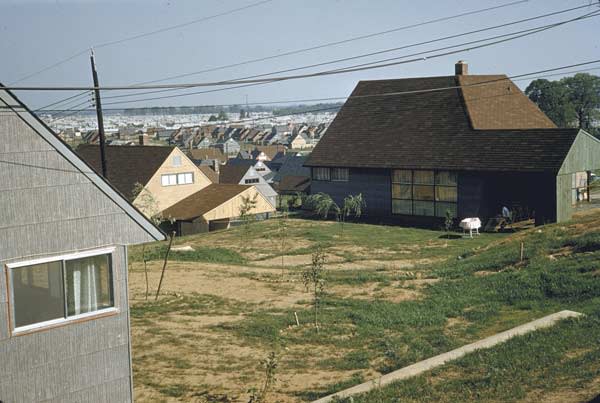
Levittown, Long Island, was the first housing development designed to use radiant heating. (Courtesy: Time & Life Pictures)
William Levitt built the homes quickly during the days that followed World War II, finishing, on average, one house every two hours using a Henry Ford-like assembly line process. All of the homes were designed to be heated with a new type of system called radiant heat; Levittown was the first development of radiantly heated homes in America.
Hydronic radiant heat circulates hot water through a series of pipes embedded in the walls, floors, or ceilings. The ensuing warmth heats a house from its bones on out, avoiding the use of forced-air ducts or old-fashioned radiators. According to converts, the benefits of radiant heating include crisper air, less dust to contend with, and lower operating costs.
My own memories of radiant heat’s benefits stem from the time I first laid my 16-year-old body down on a girlfriend’s living room floor in Levittown one blustery December day. The north wind rattled the storm windows, but that floor was so incredibly warm, like lying on the beach in July. I hated having to get up off that floor; it was the best place to be. To this day, I associate radiant heating with all good things: warmth, comfort, and young love.
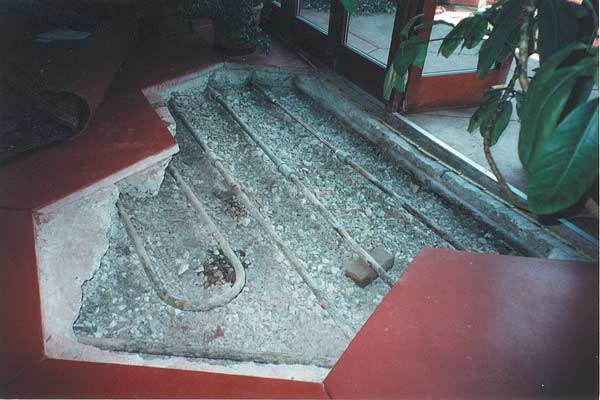
A cutaway of an original radiant system. (Photo: Tarantino Architect)
Radiant for the Masses
Levittown’s radiant system used serpentine copper pipes embedded in concrete slab floors to carry the water, which was pumped and heated via a squat boiler that sat in the kitchen right next to the other appliances. William Levitt’s Executive Vice President, Irwin “Jal” Jalonack, was responsible for this design. Jalonack started his career as a plumber, then became an HVAC engineer, and he was the one who made the decision to use oil-fired hot water radiant systems in Levittown. He searched long and hard to find those little boilers that would fit in the kitchens. They were made by York-Shipley Company, and the trade dubbed them the “low-Yorks” because they were just a bit taller than a washing machine. Most of those boilers continue to heat Levitt homes to this day, the ones that still use radiant heat. I guess you could say Jal was the man who brought radiant heat to the masses in America. Levittown’s goal as a development was to bring affordable, economic-to-maintain houses to the general public, and radiant floor heating helped it succeed.
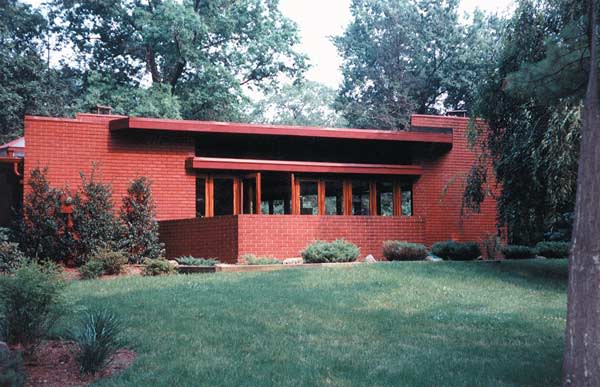
Frank Lloyd Wright used radiant floors to heat his Usonian houses, like the Richardson House in Glen Ridge, New Jersey. (Photo: Tarantino Architect)
A similar goal drove Frank Lloyd Wright to use radiant heat in the floors of his Usonian Houses. The last phase of Wright’s visionary career, the Usonian House was an affordable home designed for the common man, rather than for wealthy individuals who could afford the personalized services of an architect. Beginning in 1936, Wright designed hundreds of modest homes (averaging 1750 square feet) that attempted to be as efficient as possible using inventive construction methods—often incorporating geometric designs and a centralized kitchen/bath core to help defray building costs. A few of these houses are still lived in by Wright devotees, who meticulously restore the original systems, including radiant heat. Wright’s love of radiant heat, which merged a mechanical system with the design, unifying a house and its heating, stemmed from the fact that it aligned with his theories on organic architecture.
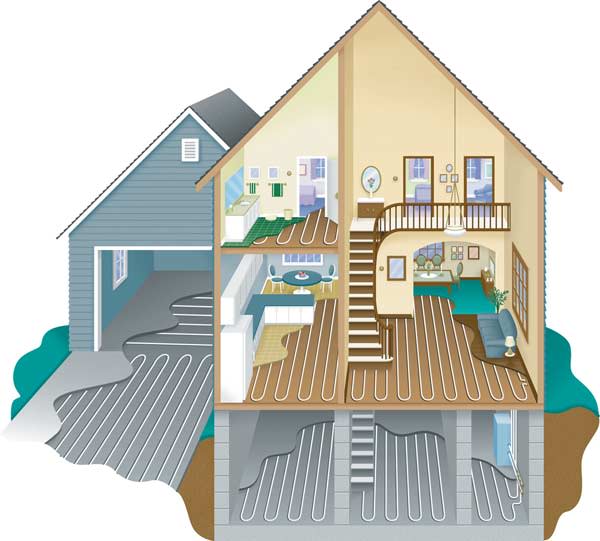
A diagram for a modern hydronic radiant floor includes plans to heat the garage and driveway as well as the house. Radiant has come a long way since Levittown, but it still wards off winter chills with reassuring warmth. (Courtesy: Uponer Wirsbo)
In both of these early modern attempts at radiantly heated homes, much of the engineering was experimental. Architects and contractors designed a lot of what they did in those days as they went along. For example, the Levitt homes used no insulation whatsoever under or at the edges of the concrete slab floors. As a result, many homeowners whose radiant systems still work can grow tulips outside in February. They think they have green thumbs, but I know they have some serious heat loss. Levitt also didn’t bother with a vapor barrier beneath the slab because that would have added too much expense.
As time went by, some of the copper tubing began to leak, and water would soak into the ground rather than rise up through the floor. Consequently, homeowners didn’t know when a minor leak occurred, which eventually led to major problems. Both Levitt’s and Wright’s homes had early copper piping that pushed the envelope right to its limits in this way. If workmen operating on a tight schedule installed the piping with too much play, the pipes could easily break. In fact, the very nature of copper’s interaction with concrete made corrosion of the pipes likely to happen eventually, unless a protective barrier was installed—a process that was perfected much later. Once leaks began they were nearly impossible to fix, leading many homeowners with this problem to abandon the systems and install baseboard convectors instead.
Fine-Tuning an Old Idea
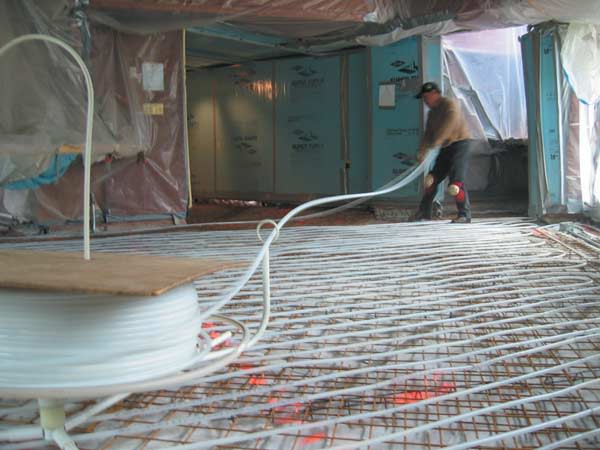
PEX tubing now replaces a lot of the old radiant systems. (Photo: Tarantino Architect)
Looking back, I realize those old radiant systems were primitive, especially considering the current standards we set for ourselves. Today, many contractors use PEX tubing (made of cross-linked polyethylene) and rubber tubing that can take more stress and strain than metal tubing. We also have simple yet incredibly smart controls that can target and precisely hold the level of comfort in a home.
Keep in mind that back when Levittown was built, radiant heat was still in its infancy. Builders assembled those houses faster than anyone imagined it could be done. The workmanship and materials were crude, and yet those systems lasted for decades-some of them continue to work today. Just imagine how long a modern, properly designed and professionally installed radiant heating system would last.
Radiant heat systems cost more to outfit than forced-air systems, but they also run much more economically. They retain heat better, too. Once the floor warms, it holds the heat and releases it as needed, even after the power goes out. I watched this phenomenon occur often as I grew up in Long Island. Whenever we lost power in an ice storm, those lucky people of Levittown, with their toasty concrete slabs, stayed comfortable on their warmed rocks for days.
That’s part of the mystique of radiant heat. It constantly delights you with its economic performance and reliable comfort. And isn’t that a big part of what we all want in a home? A place where we can relax and feel cozy?
I grew up in Hicksville, next to Levittown. We played on warm floors as children and believed that anything was possible. Some of us became famous rock stars and some of us wound up writing stories about radiant heating. All of us remember its comfort. If you’re new to radiant heat, rest easy. You’re not the first to experience it. Not by a long shot.







